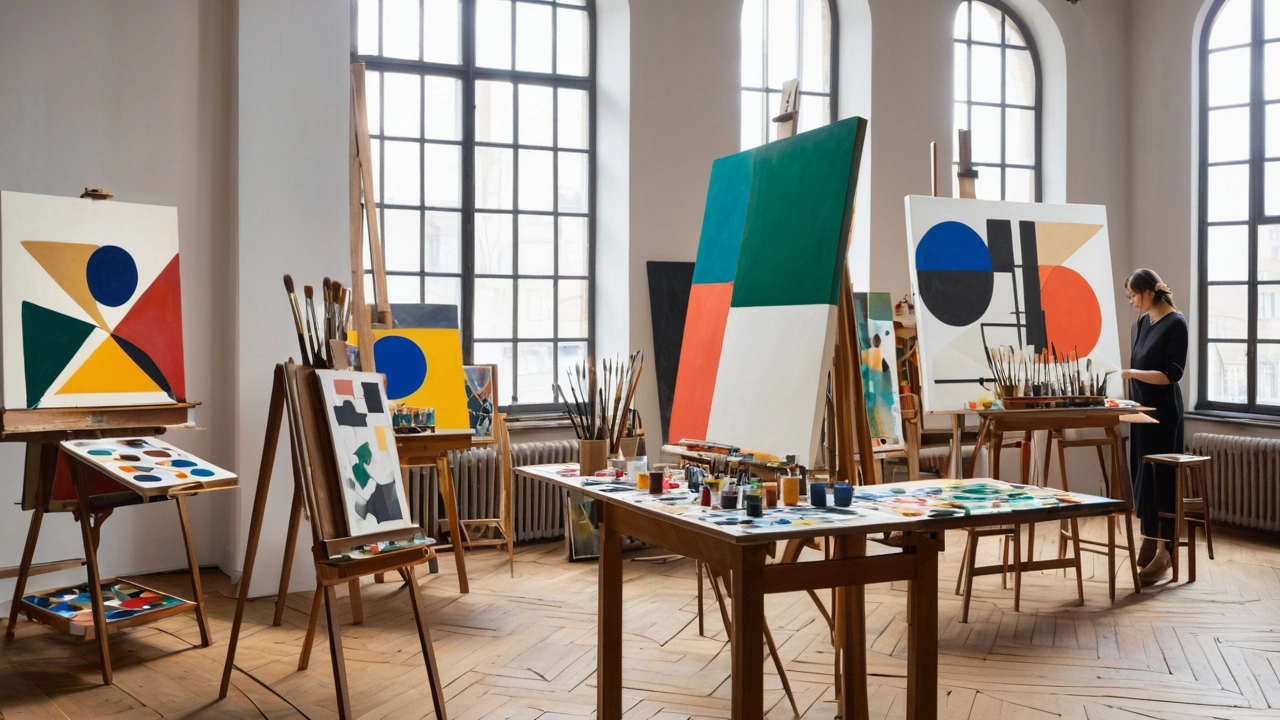Abstraction: How to See, Understand, and Try It
Abstract art can feel strange at first — no clear subject, no obvious story. That oddness is the point: abstraction lets color, shape, and gesture carry meaning. If you want practical ways to get more from abstract work, start by slowing down and noticing details you usually skip.
Look closely at three things: composition, texture, and movement. Composition is how elements are arranged — is the canvas balanced or off-kilter? Texture tells you about the artist's process: thick paint, scraped layers, or smooth washes. Movement is the implied energy: are lines restless, calm, or looping? Naming these basics gives you a handle on what the piece does, not what it shows.
How to look at abstract art
When you walk into a gallery, spend a minute stepping back, then come in for a close view. Ask plain questions: What makes me stop? What do my eyes follow? What colors hit me first? Try describing the work out loud in a single sentence — that forces you to pick the strongest detail. Don’t worry about "right" answers; your response matters because it reveals what the work triggers in you.
Context helps. Check the title, year, and short bio. A piece painted during a major life event or political moment often carries that feeling into its marks. But titles can mislead or be playful. Use context as a clue, not a rule.
Try making your own abstract piece
You don’t need training to start. Pick one emotion or idea and limit yourself: choose three colors, one tool, and a time limit. Work fast. Focus on marks and rhythm instead of a finished picture. If stuck, cover the surface and make new marks on top. Turn the canvas; a fresh angle often reveals a better composition.
Materials matter but aren't special: acrylics dry fast, oils blend longer, ink and charcoal allow quick gestures. Try collage if paint feels scary. Keep a small sketchbook of marks and color combos you like. Over time you build a visual library to pull from.
Try these quick exercises at home: a three-color study — limit yourself to three colors and paint shapes for ten minutes without thinking about objects. Do a gesture session: make thirty fast marks with a brush or charcoal, then choose three and develop them. Try cut-and-paste: tear magazine images, arrange shapes until a rhythm appears, glue, then work over the surface. Short practices train your eye and loosen your hand. Keep notes and repeat.
If you want deeper reading, check related posts on this site: Abstract Expressionism, Cubism, Fluxus, De Stijl, and installation work all connect with different sides of abstraction. Each article shows artists, examples, and clear ways to see and try those styles.
Want to collect? Start small. Buy prints or student work, hang a piece for a month and live with it. Note how it changes the room and your mood. Abstraction rewards time and attention; the more you look and try, the clearer it becomes.

